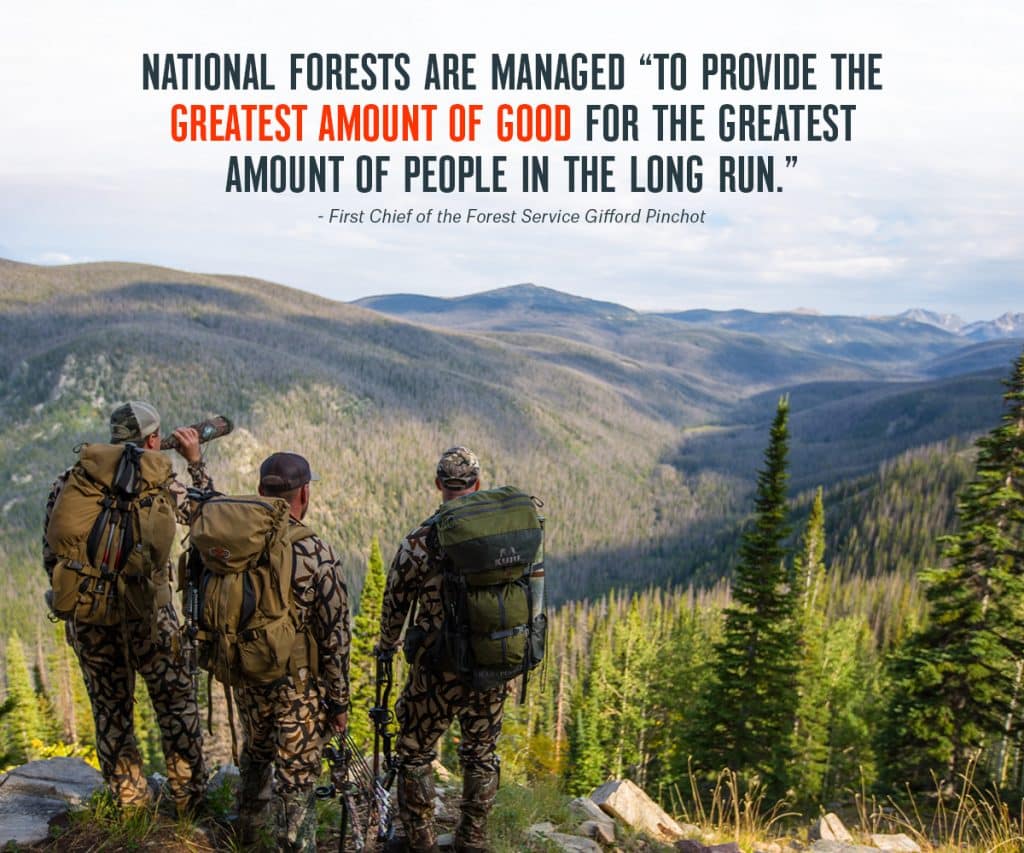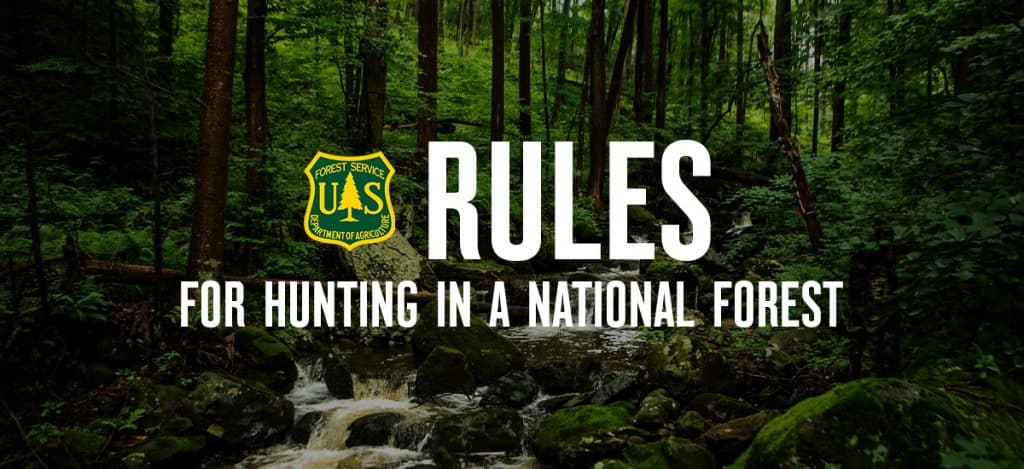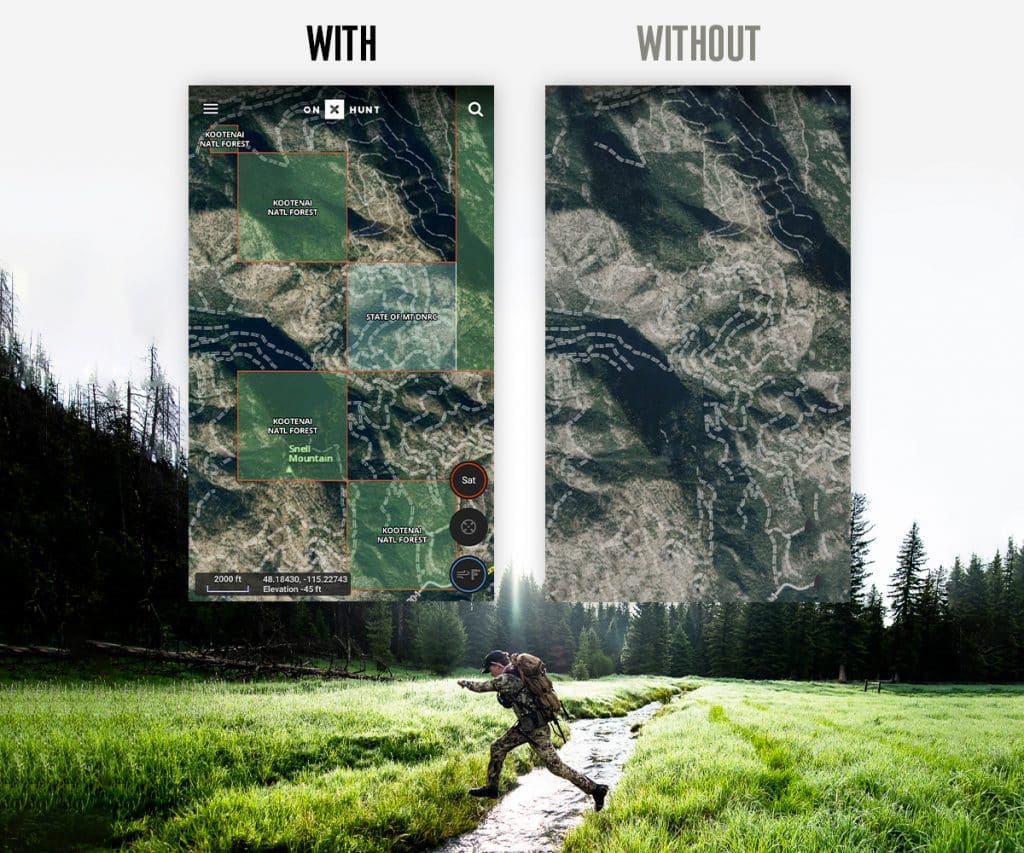Yes, you can hunt in U.S. National Forests, and in nearly all states it is quite common. Hunting in a national forest is not much different than hunting on most public lands, but there may be rules about seasons, species, and areas in which you can hunt.
National forests are not national parks, the latter of which tend to have more strict regulations about hunting. The key difference is that national forests are managed for multiple purposes, including timber, recreation, grazing, wildlife, fish, and more. National parks, however, have a vested interest in preservation, keeping the land and its wildlife as minimally altered as possible.
National forests are managed by the United States Forest Service, a division of the United States Department of Agriculture. National Parks are managed by the National Park Service, a federal bureau in the Department of the Interior. The U.S. Forest Service manages, altogether, 193 million acres of public land (more than twice that of national parks) in 44 states, comprised of 155 National Forests, 20 National Grasslands, and one National Tallgrass Prairie.
Here is a quick guide for you to understand hunting in national forests:

Hunting in National Forests
All state laws apply to national forest lands. However, most national forests that are legally accessible via a public road, navigable waterway, or adjacent state or federal land are open to hunting. Keep in mind there may be land-use restrictions in some areas, so it’s always best to check in with the local Ranger District Office before hunting in a particular national forest.

Rules for Hunting in a National Forest
While hunting is regulated at the state level, with each national forest also being governed by the rules of its GMU (a single national forest can fall under multiple GMUs), there are important, nationwide guidelines to follow while hunting on these public lands. The U.S. Forest Service promotes the following rules for hunting while in a national forest.
- All firearms and bows with arrows should be cased and unloaded while in a recreation area or other public areas.
- Discharging a firearm (including a bow and arrow) is prohibited in or within 150 yards of a developed recreation site, a residence, or any place where people are likely to be.
- Shooting across bodies of water or a Forest Service road is prohibited.
- Shooting into or within any cave, mine, or open shaft is prohibited.
- Private land is interspersed with public land and you must obtain written permission from the private landowner to hunt on their property. Obtain a map and use caution to ensure you don’t inadvertently stray off public land onto private.
- Only portable stands or blinds are allowed. Check with your local ranger district for restrictions and time limits.
How To Hunt in National Forests
North American Whitetail published an article by Dr. James C. Kroll recounting an “experiment” he did with one of his students, being challenged to find a quality whitetail buck on national forest land in Texas. The experiment, and subsequent research, was carried out in Davy Crockett National Forest, “one of the most heavily hunted public properties in Texas.”
The article breaks down how Dr. Kroll and his student approached scouting the public land and choosing where to hunt in it. Broadly, this is what they did to find the best hunting spot:
- Find national forest maps (or use the Government Lands Layer with onX Hunt)
- Applying what hunters know about deer behavior (and human behavior), start mapping out the terrain where deer might prefer to be. Dr. Knoll also considered that in his studies he found most hunters never stray more than 1,500 feet away from their vehicles to hunt – information he used to determine low-pressure hunting areas.
- Scout those potential areas, looking for saddles between drainages. Through e-scouting, look for the best ways to approach the area and what the winds do in that area. Look for water. Look for rubs. Look for bedding areas. Look for game trails.
- Commit to your spot and hunt it if the conditions are favorable according to your plan.
Boiled down, Dr. Knoll’s article shares the simple keys to hunting in national forests – research, scout, and go.

Use onX for Hunting National Forest Public Lands
With onX Hunt it is easy to scout any national forest in the U.S.* Simply open onX Hunt on either a smartphone or computer, turn on the Government Lands layer, and look for blue color-coded land. You might find other types of color-coded public lands as well, including BLM, National Parks, State Lands, etc. Then turn on the Private Lands layer to see adjacent private landowner information, including names and tax addresses.
After identifying the national forest you plan to hunt, you’ll need to know what hunting restrictions and licenses you’ll need for that area. The free onX GMU Hub will give you all that information, and more (check out the Alabama A Deer GMU as an example).
With our 3D Maps, you’ll be able to better visualize drainages and saddles and then mark them with customizable Waypoints for your on-the-ground scouting or for sharing with your hunting partners.
Once you’re in the national forest and looking for promising signs of game, you can easily mark things like rubs, wallows, bedding areas, and water sources with Photo Waypoints, mapping out an entire hunting strategy with data and visual aids.
* For step-by-step instructions on how to scout public lands, including national forest lands, in the onX Hunt App, please visit the following support article.
List of National Forests, in Alphabetical Order
Alabama National Forests
- Conecuh National Forest
- Talladega National Forest
- Tuskegee National Forest
- William B. Bankhead National Forest
Alaska National Forests
Arizona National Forests
- Apache-Sitgreaves National Forest
- Coconino National Forest
- Coronado National Forest
- Kaibab National Forest
- Prescott National Forest
- Tonto National Forest
Arkansas National Forests
California National Forests
- Angeles National Forest
- Cleveland National Forest
- Eldorado National Forest
- Inyo National Forest
- Klamath National Forest
- Lake Tahoe Basin Management Area
- Lassen National Forest
- Los Padres National Forest
- Mendocino National Forest
- Modoc National Forest
- Plumas National Forest
- San Bernardino National Forest
- Sequoia National Forest
- Shasta-Trinity National Forest
- Sierra National Forest
- Six Rivers National Forest
- Stanislaus National Forest
- Tahoe National Forest
Colorado National Forests
- Arapaho National Forest
- Grand Mesa National Forest
- Gunnison National Forest
- Pike National Forest
- Rio Grande National Forest
- Roosevelt National Forest
- Medicine Bow-Routt National Forest
- San Isabel National Forest
- San Juan National Forest
- Uncompahgre National Forest
- White River National Forest
Florida National Forests
Georgia National Forests
Idaho National Forests
- Boise National Forest
- Caribou-Targhee National Forest
- Clearwater National Forest
- Idaho Panhandle National Forests (Coeur d’Alene, Kaniksu, and St. Joe National Forests)
- Nez Perce National Forest
- Payette National Forest
- Salmon-Challis National Forest
- Sawtooth National Forest
- Uinta-Wasatch-Cache National Forest
Illinois National Forests
Indiana National Forests
Kentucky National Forests
- Daniel Boone National Forest
- George Washington and Jefferson National Forests
- Land Between the Lakes National Recreation Area
Louisiana National Forests
Maine National Forests
Michigan National Forests
Minnesota National Forests
Mississippi National Forests
- Bienville National Forest
- Delta National Forest
- De Soto National Forest
- Holly Springs National Forest
- Homochitto National Forest
- Tombigbee National Forest
Missouri National Forests
Montana National Forests
- Beaverhead-Deerlodge National Forest
- Bitterroot National Forest
- Custer National Forest
- Flathead National Forest
- Gallatin National Forest
- Helena National Forest
- Kootenai National Forest
- Lewis and Clark National Forest
- Lolo National Forest
Nebraska National Forests
Nevada National Forests
New Hampshire National Forests
New Mexico National Forests
- Carson National Forest
- Cibola National Forest
- Gila National Forest
- Lincoln National Forest
- Santa Fe National Forest
New York National Forests
North Carolina National Forests
- Cherokee National Forest
- Croatan National Forest
- Nantahala National Forest
- Pisgah National Forest
- Uwharrie National Forest
Ohio National Forests
Oklahoma National Forests
Oregon National Forests
- Deschutes National Forest
- Fremont-Winema National Forest
- Klamath National Forest
- Malheur National Forest
- Mount Hood National Forest
- Ochoco National Forest
- Rogue River-Siskiyou National Forest
- Siuslaw National Forest
- Umatilla National Forest
- Umpqua National Forest
- Wallowa-Whitman National Forest
- Willamette National Forest
Pennsylvania National Forests
Puerto Rico National Forests
South Carolina National Forests
South Dakota National Forests
Tennessee National Forests
Texas National Forests
- Angelina National Forest
- Davy Crockett National Forest
- Sabine National Forest
- Sam Houston National Forest
Utah National Forests
- Ashley National Forest
- Dixie National Forest
- Fishlake National Forest
- Manti-LaSal National Forest
- Uinta-Wasatch-Cache National Forest
Vermont National Forests
Virginia National Forests
Washington National Forests
- Colville National Forest
- Gifford Pinchot National Forest
- Mount Baker-Snoqualmie National Forest
- Okanogan-Wenatchee National Forest
- Olympic National Forest
West Virginia National Forests
Wisconsin National Forests
Wyoming National Forests